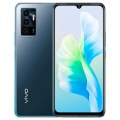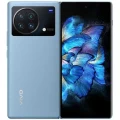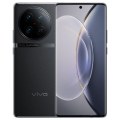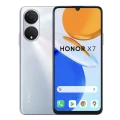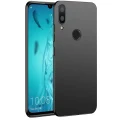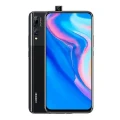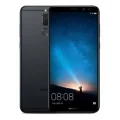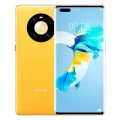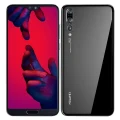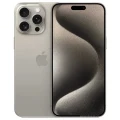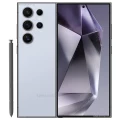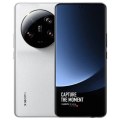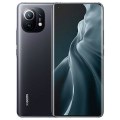Vivo Y1s
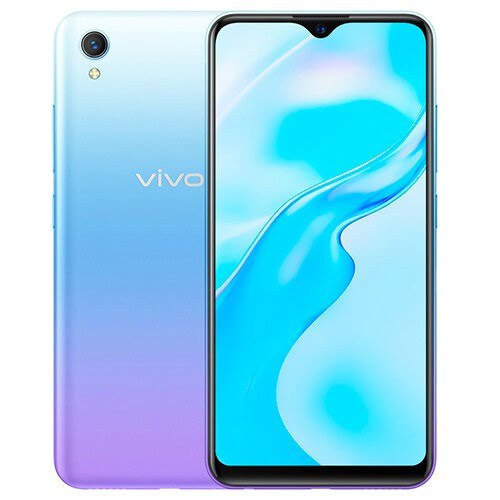


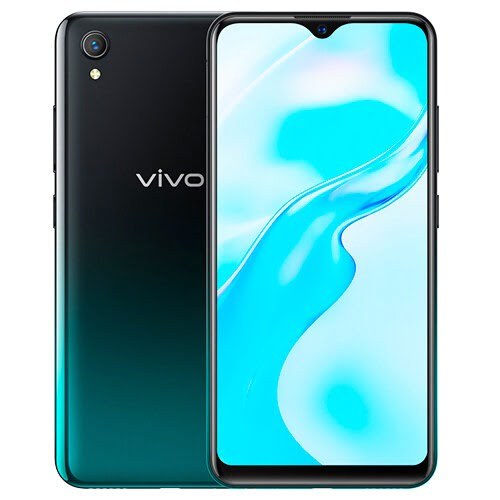
Vivo Y1s Price in Bangladesh
The Vivo Y1s Price in Bangladesh is BDT 8,999. This budget-friendly Android smartphone features a 6.22-inch IPS LCD capacitive touchscreen with a resolution of 720 x 1600 pixels (~276 ppi density) and an 81.4% screen-to-body ratio. The Vivo Y1s is powered by the MediaTek MT6765 Helio P35 (12nm) chipset, featuring an Octa-core CPU (4×2.3 GHz Cortex-A53 & 4×1.8 GHz Cortex-A53). It comes with 2GB of RAM and 32GB of internal storage, expandable up to 256GB via microSD. The device includes a 13MP rear camera and a 5MP front camera. The Vivo Y1s is powered by a 4030mAh Li-polymer battery, ensuring reliable daily usage. The Vivo Y1s Price in Bangladesh makes it an excellent option for users seeking an affordable smartphone with essential features.
Specifications
General
| Model | Vivo Y1s |
| Announced | 2020, July |
| Released | 2020, July |
| Status | Available |
| Official price | 2GB 32GB ৳8,999 |
Design
| Dimensions | 155.11 × 75.09 × 8.28 mm |
| Weight | 161 g |
| Colors |
Aurora Green, Black Emerald |
Network
| Technology | GSM / HSPA / LTE |
| 2G Network |
GSM 850 / 900 / 1800 / 1900 - SIM 1 & SIM 2 |
| 3G Network |
HSDPA 850 / 900 / 1800 / 1900 / 2100 |
| 4G Network |
LTE band 1(2100), 3(1800), 5(850), 7(2600), 8(900), 20(800), 28(700), 38(2600), 40(2300), 41(2500) |
| GPRS <strong>GPRS</strong> (General Packet Radio Service) is a packet oriented mobile data service on the 2G and 3G cellular communication system's global system for mobile communications (GSM), Generally, GPRS is used for the purpose of wireless data transfer, such as sharing pictures and videos or browsing the Internet via a mobile phone connection. | |
| EDGE <strong>EDGE</strong> (Enhanced Data GSM Environment) is a wireless network technology generally considered the next step in the 2G network offers data transfer rates up to four times faster than ordinary GSM networks, Generally, EDGE is used for the purpose of wireless data transfer, such as sharing pictures and videos or browsing the Internet via a mobile phone connection. | |
| Speed | HSPA 42.2/5.76 Mbps, LTE-A (2CA) Cat6 300/50 Mbps |
Display
| Display Type <strong>Display Technology => </strong> A number of display technologies and types used in mobile phones => TFT (Thin Film Transistor), IPS (In-Place Switching), OLED (Organic Light Emitting Diode), AMOLED (Active-Matrix Organic Light-Emitting Diode), Super AMOLED (an even advanced version of AMOLED), Resistive Touchscreen (Resistive touchscreens contain two layer of conductive material with a very small gap between them which acts as a resistance), Capacitive Touchsceen (Capacitive touchscreen technology consists of a layer of glass coated with a transparent conductor) | IPS LCD capacitive touchscreen, 16M colors |
| Size | 6.22 inches, 99.6 cm2 (~81.4% screen-to-body ratio) |
| Resolution | 720 x 1600 pixels (~276 ppi density) |
Camera
Main camera
| Camera Setup | Single |
| Primary <strong>Camera</strong> is able to capture photographs and usually videos, The most important characteristics of a camera are the resolution (measured in megapixels), lens focus type (fixed or automatic), higher megapixel cameras are known to capture higher quality photos, but not always a good measurement of the photos quality. |
13 MP |
Selfie camera
| Camera Setup | Single |
| Primary <strong>Camera</strong> is able to capture photographs and usually videos, The most important characteristics of a camera are the resolution (measured in megapixels), lens focus type (fixed or automatic), higher megapixel cameras are known to capture higher quality photos, but not always a good measurement of the photos quality. |
5 MP |
Hardware
| Chipset <strong>Chipset</strong> is a group of integrated circuits designed to perform one or a more dedicated functions, often with real time computing constraints, Popular smartphones are equipped with more advanced embedded chipsets that can do many different tasks depending on their programming. | Mediatek MT6765 Helio P35 (12nm) |
| CPU <strong>CPU</strong> (Central Processing Unit) mostly known as processors, CPU processes instructions in order to carry out certain functions that make your device operate properly. Processors are often described as the brain of computers, smartphones and tablets, Smartphones and tablets rely on processors to carry out their every task, Processors are an incredibly important factor in selecting any type of computing device, including your smartphone. | Octa-core (4x2.3 GHz Cortex-A53 & 4x1.8 GHz Cortex-A53) |
| GPU <strong>GPU</strong> (Graphics Processing Unit) is a single-chip processor designed to rapidly manipulate and alter memory to accelerate the creation of images in a frame buffer intended for output to a display, This includes things such as lighting effects, object transformations, and 3D motion. | PowerVR GE8320 |
| RAM (Memory) <strong>RAM</strong> (Random Access Memory) is a type of computer memory that can be accessed randomly, any byte of memory can be accessed without touching the preceding bytes that allows information to be stored and accessed quickly from random locations. RAM is the most common type of memory found in computer systems, smartphones, tablets and other electronic devices. | 2 GB |
| Internal Storage <strong>Internal Storage</strong> is a data storage space (flash memory) mostly used in smartphones, tablets and other electronic devices where operating system, apps, music, photos, videos, files and other user data Is stored. | 32 GB |
| Sensors <strong>Sensors</strong> are electronic components that detects and responds to some type of input from the physical environment. The specific input could be light, heat, motion, moisture, pressure and location, The output is generally a signal that is converted to use in computing systems, a location sensor, such as a GPS receiver is able to detect current location of your electronic device. |
Accelerometer, gyro, proximity |
Connectivity
| Bluetooth <strong>Bluetooth</strong> is a wireless communications technology for exchanging data between mobile phones, headsets, computers and other network devices over short distances without wires, Bluetooth technology was primarily designed to support simple wireless networking of personal consumer devices. | 5.0, A2DP, LE |
| Infrared <strong>Infrared</strong> connectivity is an old wireless technology used to connect two electronic devices. It uses a beam of infrared light to transmit information and so requires direct line of sight and operates only at close range. | |
| USB | microUSB 2.0, USB On-The-Go |
| GPS <strong>GPS</strong> The Global Positioning System is a satellite-based radio navigation system, GPS permits users to determine their position, velocity and the time 24 hours a day, in all weather, anywhere in the world, In order to locate your position, your device or GPS receiver must have a clear view of the sky. | Yes, with A-GPS, GLONASS, GALILEO, BDS |
| NFC <strong>NFC</strong> (Near field communication) is a set of standards for smartphones and similar devices to establish peer-to-peer radio communications with each other by touching them together or bringing them into proximity, usually no more than a few inches. |
Battery
| Battery Type <strong>Battery Type => </strong> Cell phones run on various kinds of batteries depending on the manufacturer, phone size or shape and features. There are basically four types of cell phone batteries => Lithium Polymer, Lithium Ion, Nickel Metal Hydride and Nickel Cadmium. | Non-Removable Li-Po |
| Capacity <strong>Battery Capacity</strong> is a measure (typically in Amp-hr) of the charge stored by the battery, and is determined by the mass of active material contained in the battery. The battery capacity represents the maximum amount of energy that can be extracted from the battery under certain conditions. | 4030 mAh |
Exploring the Vivo Y1s – A Budget-Friendly Smartphone with Surprising Features
In a world where smartphones are indispensable, the Vivo Y1s emerges as a promising contender in the budget segment. If you’re a tech enthusiast, a smartphone shopper, or a gadget reviewer, this comprehensive review of the Vivo Y1s will give you a deep understanding of what this device has to offer. From its design and performance to its camera quality and overall value for money, we’ll cover everything you need to know about Vivo’s new budget-friendly smartphone.
Introduction to Vivo Y1s
The Vivo Y1s is an entry-level smartphone designed for budget-conscious consumers who still want a reliable device with essential features. Launched by Vivo, a company renowned for delivering quality smartphones across various price ranges, the Y1s aims to cater to users looking for practicality without breaking the bank. With its sleek design, sufficient performance, and reasonable price tag, the Vivo Y1s is tailored to meet the basic needs of everyday smartphone users.
Design and Build Quality
When it comes to design, the Vivo Y1s punches above its weight. The smartphone boasts a modern, minimalist look with smooth curves and a slim profile that feels comfortable in hand. It’s available in several attractive colors, giving users the freedom to choose a style that suits their personality.
The materials used in the Vivo Y1s’ construction are mostly plastic, which is standard in this price range. However, the device does not feel cheap or flimsy. The back panel has a glossy finish, giving it a premium appearance. Despite the absence of metal or glass in its build, the Vivo Y1s is quite durable, capable of withstanding the everyday rigors of use.
The phone features a 6.22-inch Halo FullView display, which provides a decent viewing experience, especially for its price category. The bezels are fairly thin, contributing to a larger screen-to-body ratio. Overall, the design and build quality of the Vivo Y1s are commendable, offering a pleasant visual appeal and solid construction.
Performance Review
Performance is a critical aspect of any smartphone, and the Vivo Y1s does not disappoint within its category. Powered by a MediaTek Helio P35 processor and 2GB of RAM, the Y1s is designed to handle basic tasks efficiently. While it may not compete with high-end devices, it offers a satisfactory performance for everyday activities like browsing, social media, and light gaming.
In real-world usage scenarios, the Vivo Y1s manages multitasking reasonably well, although it can struggle with more demanding applications. The 32GB internal storage, expandable via microSD, provides ample space for essential apps, photos, and videos. For users who do not require extensive storage, this capacity should be more than sufficient.
Battery life is another strong suit of the Vivo Y1s. Equipped with a 4,030mAh battery, the smartphone easily lasts a full day of moderate use. Whether you’re streaming videos, browsing the web, or making calls, the Y1s ensures you stay connected without frequent recharges. The absence of fast charging can be a drawback, but given the battery’s longevity, it’s a minor compromise.
Camera Quality
The camera setup on the Vivo Y1s is straightforward yet effective. The device features a single 13MP rear camera and a 5MP front-facing camera. While it lacks the multiple lenses found in higher-end models, the Y1s’ camera performs admirably for its class.
In good lighting conditions, the rear camera captures crisp and vibrant photos with decent detail. The color reproduction is quite natural, and the autofocus works well, making it easy to snap quick pictures. Low-light performance, however, is less impressive, with noticeable noise and reduced clarity.
The 5MP front camera is sufficient for selfies and video calls. It includes basic beautification features that enhance photos without overdoing it. Although the camera specifications are modest, they are adequate for users who primarily share images on social media.
User Experience and Interface
Vivo Y1s runs on Funtouch OS 10.5, based on Android 10. The interface is user-friendly, with a clean and intuitive layout that new users can quickly adapt to. Funtouch OS enhances the Android experience with additional features and customization options, catering to a variety of preferences.
Navigating through the interface is smooth, with minimal lag during basic operations. The inclusion of smart split-screen functionality allows for multitasking, which is a nice touch for a budget device. However, the lack of advanced biometric security options like a fingerprint scanner might be a drawback for some users, relying solely on face unlock and traditional PIN or pattern methods.
One of the standout features of the Y1s is its system-wide dark mode, which not only reduces eye strain but also conserves battery life. The device also supports gesture navigation, making it easier to switch between apps and access various functions with simple swipes.
Value for Money
In the competitive market of budget smartphones, the Vivo Y1s holds its ground well. Priced competitively, it offers a solid blend of design, performance, and usability. When compared to similarly priced models from other brands, the Y1s stands out for its reliability and user-friendly experience.
For instance, against competitors like the Samsung Galaxy A01 and the Xiaomi Redmi 9A, the Vivo Y1s offers a larger battery and a more appealing design. While it may not have the best-in-class specifications, it compensates with a balanced performance that meets the needs of its target audience.
For tech enthusiasts and smartphone shoppers looking for an affordable yet capable device, the Vivo Y1s provides excellent value for money. It’s particularly suitable for first-time smartphone users or those seeking a reliable secondary device.
Final Verdict
The Vivo Y1s is a commendable effort by Vivo to deliver a budget smartphone that doesn’t compromise on essential features. Its sleek design, adequate performance, and user-friendly interface make it a compelling choice in the budget segment.
Pros:
- Attractive design and build quality
- Long-lasting battery life
- User-friendly interface with customizable options
- Affordable pricing
Cons:
- Limited camera performance in low light
- No fast charging support
- Absence of advanced biometric security
For tech enthusiasts, smartphone shoppers, and gadget reviewers, the Vivo Y1s is worth considering. It strikes a balance between affordability and functionality, making it a practical choice for everyday use. If you’re in the market for a budget-friendly smartphone that delivers where it counts, the Vivo Y1s should be on your radar.
